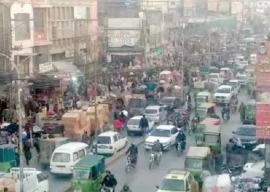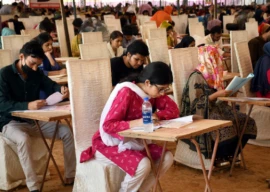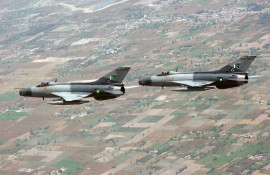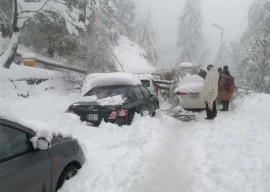
The surveyed region had a global acute malnutrition (GAM) rate of 13.9 per cent and severe acute malnutrition (SAM) rate of 3.5 per cent, said Shamim Rafiq, director general of the Bureau of Statistics, at a seminar here on Thursday.
The event was organised by the Planning and Development Department and the Bureau of Statistics to discuss the results of the nutrition survey, which was conducted in October and November with technical assistance from the United Nations Children’s Fund (Unicef).
According to Unicef, GAM reveals how many children in a given population are moderately and severely malnourished, and have not gained the required weight for their height.
SAM is an advanced state of acute malnutrition and children in this condition require immediate medical treatment.
The World Health Organisation classifies a GAM rate of 15 per cent as an emergency threshold which automatically triggers a humanitarian response.
Rafiq, the Bureau of Statistics director general, said that more than 60 per cent of houses were katcha (made of mud).
He said that approximately half of the households were mainly earning through daily labour, though some were still selling livestock and other household assets to get by.
He said that most people were getting cereals, wheat, oil and sugar for more than 5-6 days a week, but the consumption of meat, fruits and vegetables was extremely low. He said that around 40 per cent of the survey respondents had taken a loan since the flooding, and another 40 per cent had started distress sales of their household goods. Around 35 per cent said that they had received some financial assistance, with 90 per cent receiving at least Rs20,000 from the government.
Rizwan Taqi, chief economist at the Planning and Development Department, said some 1,200 households were interviewed for the survey and all children between 6 to 59 months of age were measured.
Dr Moazzam Hussain, a Unicef representative from Sri Lanka, said that the survey results showed that the greatest prevalence of acute malnutrition among children in flood-affected areas occurred in communities with the highest rates of chronic, or long-term, malnutrition. He said that malnourished children were likely to be from the poorest families, who lived in temporary or katcha houses and had outstanding loans. He said that poor sanitation and lack of access to services were aggregating factors to malnutrition.
Since the onset of the floods in Punjab, the provincial government has screened more than 211,000 children for malnutrition.
Nearly 34,000 children under five have received treatment, 190 therapeutic feeding centres have been established and 17,718 malnourished pregnant and lactating women have been identified and treated for malnourishment.
The briefing was also attended by Katsamay Rajphanthong, the head of Unicef in Punjab, and Special Health Secretary Waseem Mukhtar.
Published in The Express Tribune, February 4th, 2011.











1735025557-0/Untitled-(96)1735025557-0-270x192.webp)











COMMENTS
Comments are moderated and generally will be posted if they are on-topic and not abusive.
For more information, please see our Comments FAQ